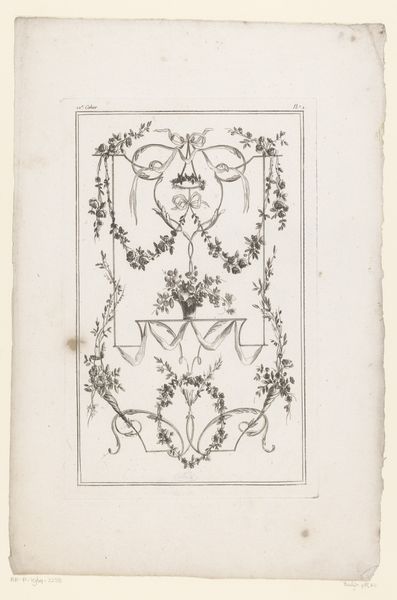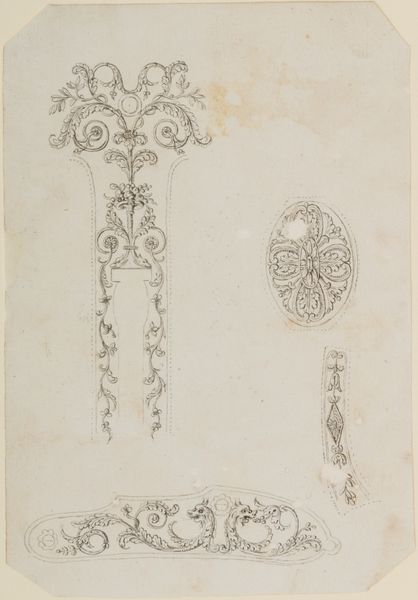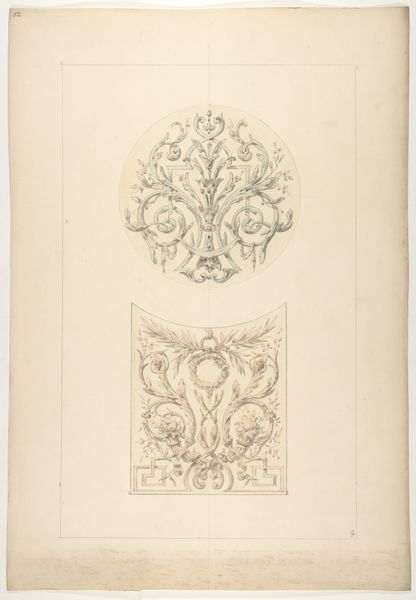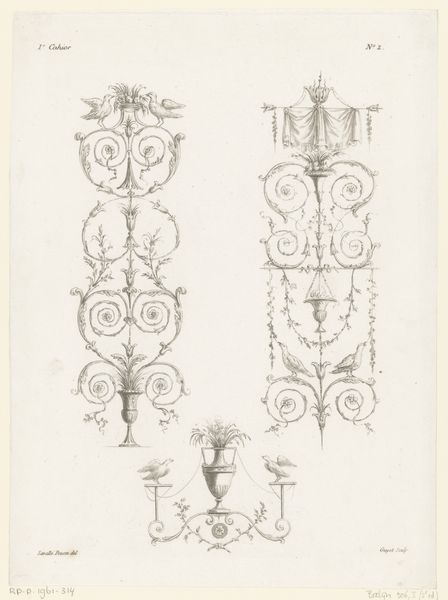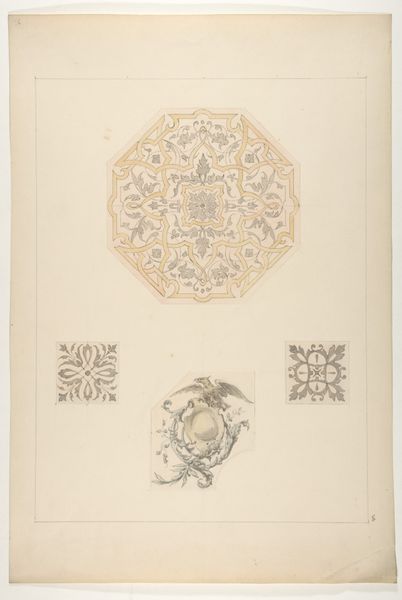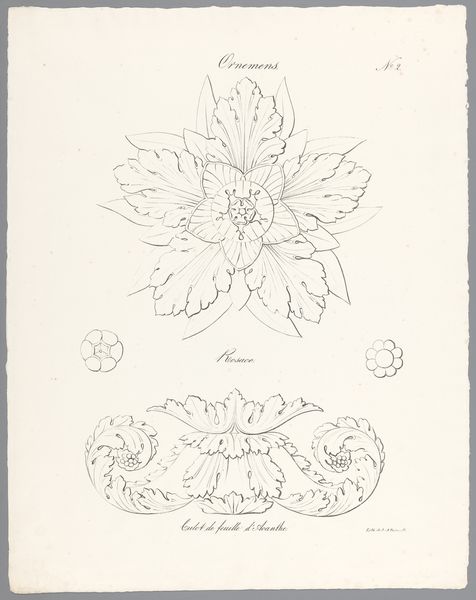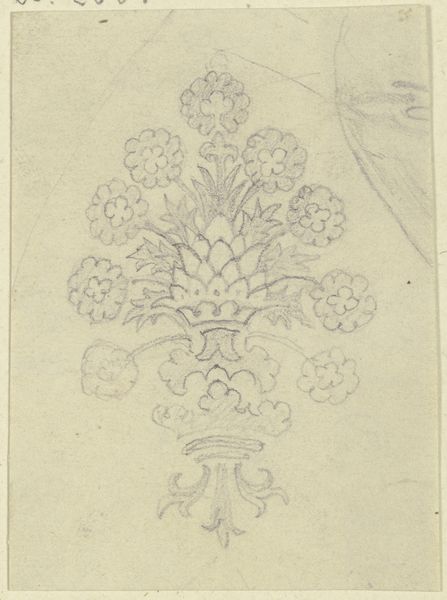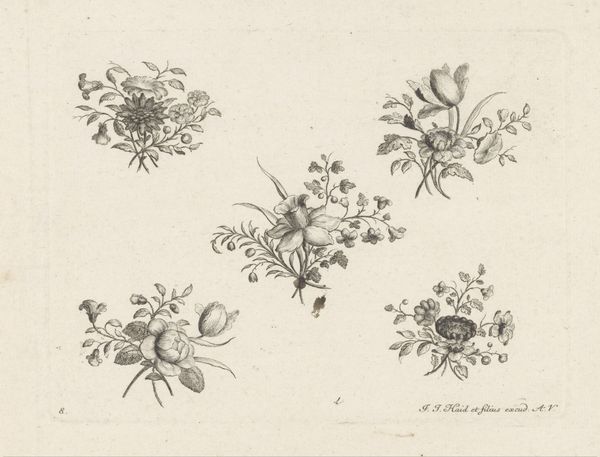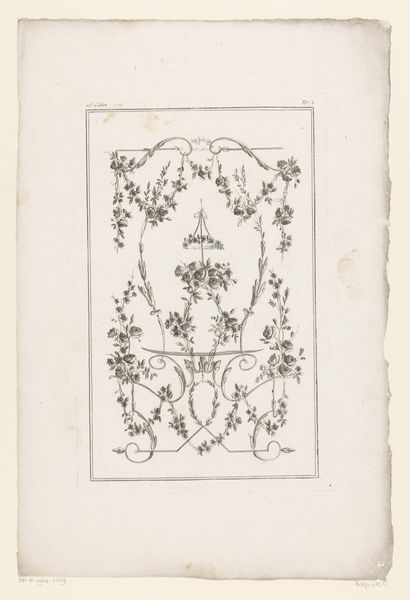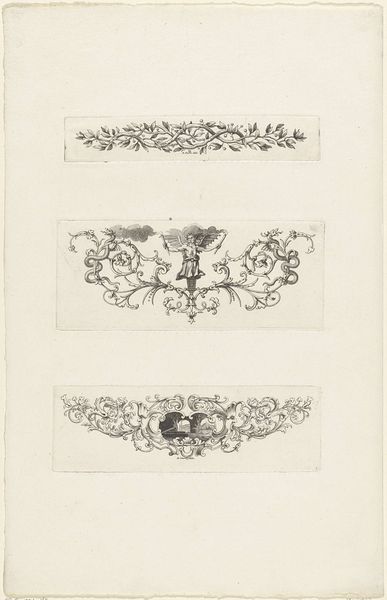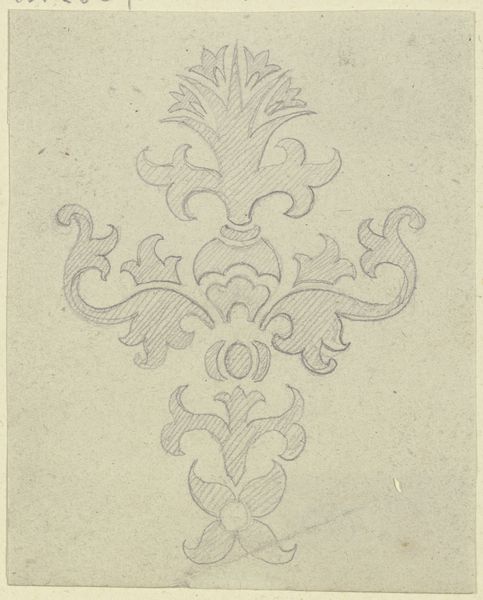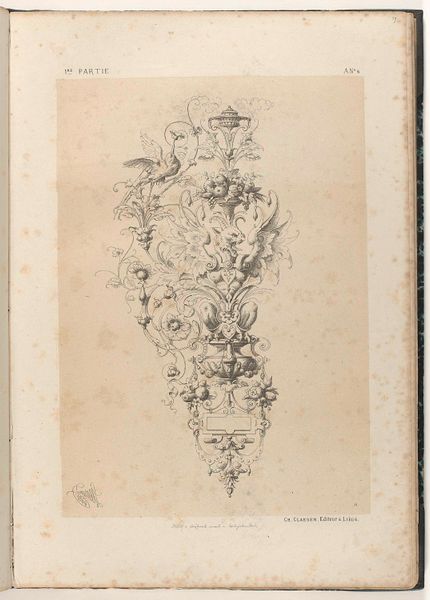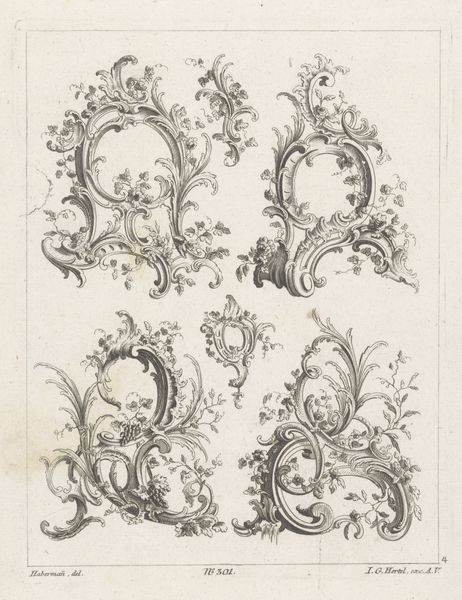
drawing, ornament, tempera, paper, ink, pencil, pen
#
portrait
#
drawing
#
ornament
#
light pencil work
#
art-nouveau
#
tempera
#
etching
#
paper
#
ink
#
german
#
geometric
#
pencil
#
pen work
#
symbolism
#
pen
Copyright: Public Domain
Curator: This delicate study, "Three Vignettes," comes to us from the hand of Wilhelm Steinhausen around 1884. The artwork, currently held in the Städel Museum, features sketches in pencil, pen, ink, and tempera on paper, hinting at Art Nouveau and Symbolist leanings. Editor: It’s immediately striking how ephemeral these drawings feel, a study of ornament fading into the page. You almost want to reach out and protect it. Curator: Absolutely, there is an inherent fragility to these pieces. What I find captivating is the interplay between geometric shapes and the floral motifs—especially how Steinhausen blends them, inviting associations with rebirth and the cyclical nature of time. The rose in the center feels almost like an emblem. Editor: Yes, and the materiality underscores that cyclical feel, doesn't it? Tempera and ink— such earthly, readily available means, contrasting the elaborate and aspirational character of Art Nouveau. Were these sketches likely meant to be preparatory for something more monumental? Perhaps studies for printed textiles or ceramics? Curator: That is likely, considering how ornaments like these served in interior design. The stylized natural forms represent a deep yearning for paradise, reflecting broader spiritual currents and how everyday objects became carriers of potent symbolism during that era. Editor: That focus on symbolic representation is such an intriguing counterpoint to the manual labor of applying these motifs in craft. The repetition required would've been substantial, creating a tension between idealized beauty and material conditions of the worker. Curator: That tension adds another layer of intrigue, as it emphasizes that, just as flowers point beyond themselves to a new life, the artistry itself hints at something greater and maybe unattainable beyond the surface. Editor: I leave today contemplating these sketches' complex dialogue between production and symbolism. It enriches the experience of the art as it once filled someone's room. Curator: Yes, and that we have been reminded how such quiet pencil strokes on paper can become powerful declarations of cultural memory.
Comments
No comments
Be the first to comment and join the conversation on the ultimate creative platform.
